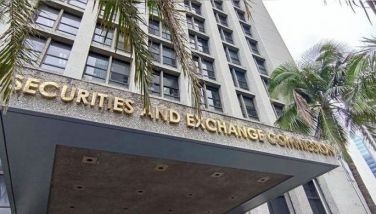BSP pursues gradual bank reserve cut

MANILA, Philippines — The Bangko Sentral ng Pilipinas (BSP) intends to gradually pursue the reduction of the level of deposits that banks are required to maintain with the central bank so as not to flood the system with excess liquidity.
BSP assistant governor Franciso Dakila Jr. said monetary authorities would adopt a gradual approach in reducing the reserve requirement ratio (RRR) that currently stands at 19 percent.
“It’s always good to have some gradualism in the conduct of monetary policy. It always pays to have a gradualist approach to changes in the way we do shifting in the various instruments,” he said.
Last March 2, the RRR was reduced to 19 percent from the previous level of 20 percent as part of the pronouncement made by BSP Governor Nestor Espenilla Jr. that he would like to see the level reduced to single digit level in tandem with the capital market reforms.
Dennis Lapid, deputy director of the BSP’s Department of Economic Research, said the Philippines has the highest RRR in the region compared to China’s 17 percent, Brazil’s 15.5 percent, Indonesia’s 12 percent, Thailand’s six percent, Taiwan’s six percent, India’s four percent, Malaysia’s 3.5 percent, Singapore’s three percent, and Japan’s 0.8 percent.
He explained the cut is aimed at bringing the RRR in line with regional norms. The reduction freed up about P90 billion in additional liquidity that was easily absorbed by the term deposit auction facility (TDF) with a higher volume of P110 billion from P40 billion at the start of the year.
Excess liquidity in the financial system could push up inflation that already leapt to its highest level in more than three years at 4.5 percent in February from four percent in January due to the impact of the new tax reform law.
Lapid explained the BSP could now effectively manage liquidity in a more market-friendly manner with the shift to the interest rate corridor (IRC) framework in June 2016.
Lapid said the speed and timing of the phased reduction in RRR are largely a function of the liquidity absorbing ability of the central bank’s open market operations.
“There’s also a practical reason for doing it with a gradualist approach. If you do a one-time large adjustment, we’re not sure how the counterparties will respond also. It might be a case of these financial institutions trying to take a drink from a fire hose if you go to single digits in one big drop,” he said.
He warned about the risk wherein banks “might not necessarily know how to deploy the liquidity.”
“The risk with the large addition to system liquidity… is that some of the short-term instruments might also drop outside of the corridor, which would in a way negate the gains we’re seeing in terms of interest rate adjustments,” he said.
BSP Governor Nestor Espenilla Jr. earlier said the phased reduction of the ultra-high RRR would allow efficient absorption and mobilization of liquidity.
The move, he said, is an operational adjustment to support the BSP’s shift towards a more market-based implementation of monetary policy.
“We have heavily relied on reserve requirements for a long time in a situation of underdeveloped banking and financial markets and limited open market operation tools. This is no longer the case for the Philippines. Our financial system is more sophisticated, disciplined, and resilient; our economy is much stronger today,” Espenilla said.
- Latest
- Trending


























